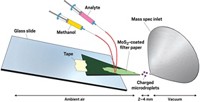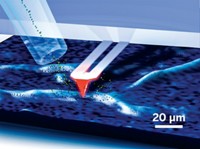Advertisement
Grab your lab coat. Let's get started
Welcome!
Welcome!
Create an account below to get 6 C&EN articles per month, receive newsletters and more - all free.
It seems this is your first time logging in online. Please enter the following information to continue.
As an ACS member you automatically get access to this site. All we need is few more details to create your reading experience.
Not you? Sign in with a different account.
Not you? Sign in with a different account.
ERROR 1
ERROR 1
ERROR 2
ERROR 2
ERROR 2
ERROR 2
ERROR 2
Password and Confirm password must match.
If you have an ACS member number, please enter it here so we can link this account to your membership. (optional)
ERROR 2
ACS values your privacy. By submitting your information, you are gaining access to C&EN and subscribing to our weekly newsletter. We use the information you provide to make your reading experience better, and we will never sell your data to third party members.
Analytical Chemistry
Moving Toward Single-Molecule Mass Spec
Caltech scientists report the first spectra using ultrahigh-frequency nanocatilever resonators as ultrasensitive mass detectors
by Celia Henry Arnaud
June 29, 2009
| A version of this story appeared in
Volume 87, Issue 26
Caltech scientists report the first mass spectra obtained with ultra-high-frequency nanocantilever resonators as ultrasensitive mass detectors (Nat. Nanotechnol., DOI: 10.1038/nnano.2009.152). Physicist Michael L. Roukes and coworkers use these NEMS (nanoelectromechanical systems) resonators to detect individual biomolecules and nanoparticles. The resonators vibrate at an ultrahigh frequency that depends on the total mass of the device and changes when even a single molecule adsorbs to the device surface. Measuring mass with microscale devices is well-known, but Roukes and coworkers' device is more miniaturized than previous ones and uses different components, such as electrospray ionization source and ion optics, to deliver ions to the detectors. They collected NEMS mass spectra of bovine serum albumin monomers and oligomers and colloidal gold nanoparticles. The Roukes group has accomplished a "breakthrough achievement," Thomas G. Thundat of Oak Ridge National Laboratory says. "This can potentially lead to a miniature mass spectrometer with single-molecule sensitivity." R. Graham Cooks, a mass spectrometrist at Purdue University, notes, "Much remains to be done, but this is an exciting demonstration of feasibility."




Join the conversation
Contact the reporter
Submit a Letter to the Editor for publication
Engage with us on Twitter